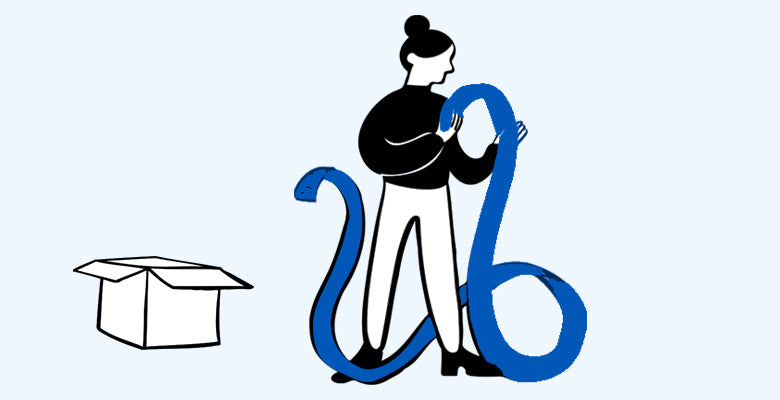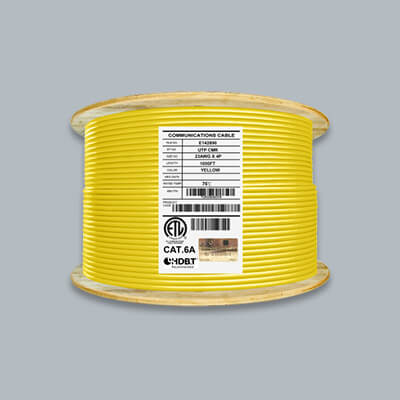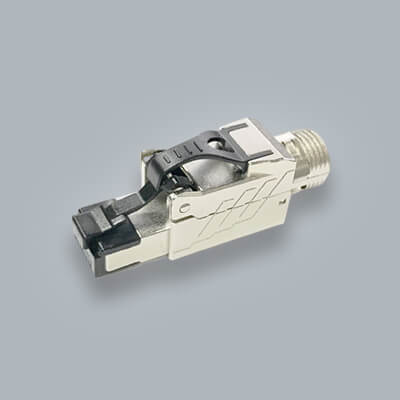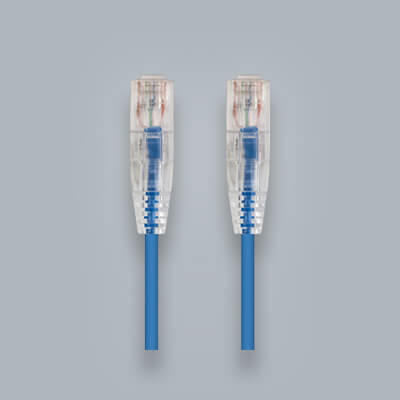Maximum Cable Pulling Force

The cable installation process can have many different aspects you need to keep in mind. After you've grabbed your cable box or cable on a reel you're now ready to start installing. Not so fast ! Although cable is for the most part strong in design you can actually damage the cable when pulling. This is why pulling force needs to be carefully watched as no one likes a non working ethernet cable. In this post we'll cover the the topic of the the maximum recommended amount pounds of force when pulling cables such as Cat5e or Cat6.
What is the Maximum Cable Pulling Force
Let's jump right in to it by detailing the maximum pulling tension. For ethernet cable such Cat5e or Cat6 the maximum pulling force is 25 lbs (110N). This pulling tension covers cables in pull boxes and cable reels. So whether the cable is Cat5e, Cat6, Cat6A or Cat8 you should watch that you are not pulling more than with 25 pounds of force.
The good thing about this amount of pulling tension is that it can be difficult to achieve if you are careful. Rushing your cable pulls can absolutely lead to a damaged cable which in return leads you to having to re do. Something that no one wants to endure. Especially if it can be easily avoided by just taking your time.
Now that we got the recommend tension number of 25lbs for your cable you might be asking how we go about measuring that?
How To Measure Pulling Force?
Whether you're installing cable in your home or a a job site the question will come around on how we can measure pulling force on our cables. There are a couple different ways you can do this.
If you're on the professional side of installations doing this on large jobs its possible you might have tools to measure this for you. Some of the common tools that can measure pulling tension for you is a fishing scale, tension gauge or push pull gauges. These tools can help in giving you good estimates of the pulling tension on your cables. The thing about these tools is that you may or may not have them. Especially if you are a DIY at your home. Having these tools is unlikely.
What about formulas? You can use math formulas to solve this problem as well. Here's one of the many different formulas for calculating pulling tension.
Tm = K x n x CMA
Where: Tm = maximum pulling tension (lbs.) (see Appendix A for calculated tensions)
K = constant
• 0.008 for copper conductors
• 0.006 for aluminum conductors
n = number of conductors
CMA = circular mil area for one conductor
Pretty simple right?
Yea not very ideal. So let's focus on a simple solution that anyone can use especially for a DIY home installation. Calculating pulling tension can be done using patience. As you're pulling the cable use your senses to get a feel for the amount of tension on the cable. Doing so you can often tell what is too hard or not.
When pulling cable from a box or reel you just don't want to pull too hard. Take your time and make it as smooth as possible. This ensures that no problems in the box or damage to the cable occurs.
Things To Keep In Mind
Having some helpful guidelines can make the pulling process that much easier. Here are some tips you want to keep in mind when installing your cable:
- Using conduit can make it easier to pull. Whether in your walls or even underground. This also helps if you ever have to replace your cable.
- Reducing the amount of bends in your cable run and conduit. Especially 90° bends.
- Adding support to long runs of cables. This is especially true for bundle cable that can possibly weight down each other.
- Try to limit the amount of objects and corners you are pulling through.
- Grab a friend or family member. A 2nd or even 3rd person can help make pulling cable easier by monitoring the boxes and giving you multiple pulling spots. Ideal for larger installations.
- Feel like your cable is stuck? Don't pull through it with anymore tension than you have already been using. Check to see if the cable can be adjusted in the box so you can then pull through it.
- Cut off the portion you used to pull from. If you pull cable from the end of the reel you can pull yourself a couple more feet and cut off the portion you used to pull from. This is helpful if you feel like you might have stretched the jacket or squeezed too tight with your hands.
Knots and twists in boxes are some of the most common things that can occur when pulling cable. This isn't going to happen every time and maybe it'll never happen for you but if you feel a sudden jam don't yank through it. Go to the source and see if the cable can be adjust by hand.
These tips can be used to reduce the chances of any problems during your installation. It's also important to cover why going over the maximum pulling tension can be a problem.
Using Too Much Force on Ethernet Cable
If you happen to use too much force on your ethernet cable chances are you have damaged a portion of the cable. While going for the maximum performance possible you want to limit any of these issues..
The biggest problem that occurs when pulling too hard on cable is that the conductors and jackets become stretched. Both of these parts are vital to cable performance. Having one these off can deteriorate the effective of either of these. A bad conductor can reduce performance and a damaged jacket can affect its performance in its environment.
Final Thoughts
Everyone wants a good connection with your ethernet cable. Practicing patience and some of these tips can go a long way in giving your network the best possible performance. Remember to keep the pulling tension under 25 lbs. by not pulling too hard and giving it a more controlled pull. If you're bundling cable together the same can be said as well. Bundled cables should be pulled with the same care as a single run.
We hope this article helps! Feel free to reach out to use with any of your cabling questions.
Happy Install !






Helpful thanks